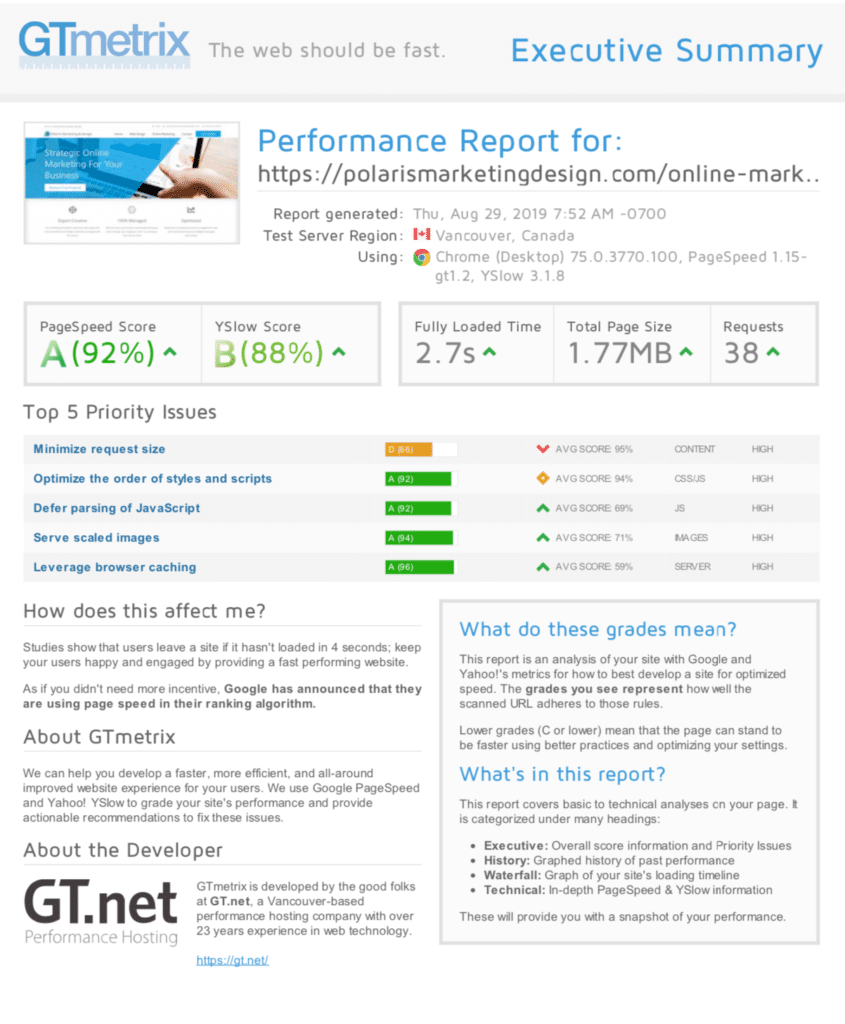Search engine optimization (SEO) can be at times confusing or complicated because it’s always a moving target. It would be a lot easier if Google provided it’s algorithms to how they organically rank but that isn’t the case. What we are left with are experts providing their best analysis of how to rank pages (which they are pretty good at). The best thing for SEO project managers and the DIY crew can focus on is doing the fundamentals and focusing on the most import tasks. It’s more prevalent in the DIY crew but SEO project managers also make the mistake of not sticking to fundamentals we (not search engines) can control. In this article we’ll cover 5 of the most common mistakes that if done or completed correctly, can lead to a major improvement in a domain’s SEO.
Let’s First Understand What SEO Is Before We List 5 Of The Most Common Mistakes
Crash Course On SEO
Search Engine Optimization (SEO) is the process of optimizing a domain & it’s page’s organic ranking in a search engine’s search result. The goal of companies like Google is to produce the best answer for a users search query. They receive over 63,000 searches every second so you know they have a lot of work to do. Web developers and SEO project managers specialize in creating websites and content that make it easy for Google to have confidence that their domains are the best to answer specific search queries. This is easier said than done and it takes time.
How Is SEO Improved
SEO is improved by completing a number of tasks, the list isn’t short. The short and easy answer is to create quality content that is meant to help the end user and to acquire as many quality (not quantity) backlinks as possible.
Here Are The 6 Most Common SEO Mistakes
1. Ignoring Competitive Research
Whenever you’re entering new territory, in this case SEO, it’s always a good idea to take a look and analyze the competitive landscape. We say this a lot but it’s true, SEO takes a lot of time and effort. The whole point of analyzing what your competitors are doing and having success with is to imitate their wins. Quality competitive research provides a road map that shows a new entrant what they need to do to compete and also save plenty of valuable time mimicking successful parts of competitive strategies. One of the leading SEO competitive analysis tools is SEM Rush. They provide a platform that gives SEO project manages a look behind the curtain.
What To Analyze During Competitive SEO Research
- Quality Backlink Referring Domains
- Keyword Rankings
- Meta Data
- Domain Authority Score
- Site Structure
2. Not Taking Advantage of SEO Tools (Free & Paid)
One of the qualities of humans that set us apart from other animals is our ability to use tools. The same goes for quality SEO management and the “just wing it” crowd. SEO tools are a must have (like fire) and are needed in every step of the time intensive SEO building process. These tools are used for research, implementation, monitoring, testing, and management. One of the best advantages of SEO tools is that a lot of them are free! Google provides most of the free tools but they are some of the most effective. We’ve also mentioned SEM Rush (above) but to learn a larger list of tools we think are effective, read our article 10 SEO Tools That Produce Optimized SEO Results.
3. Not Optimizing Website Performance For Faster Loading Speeds
Yes, the speed of a website plays a large factor into an overall SEO strategy and performance. Just think of it, does Google really want to display a link on the first page of search results if the URL takes forever to load? The answer is no. In fact for every 1 second delay load time decreases customer satisfaction by 16%.
Recently Google has reversed which device type they favor in their algorithm. Mobile site load times weigh more now than desktop. This means that web developers play an ever increasing role in SEO because they’ll now need to build for mobile first and then format for desktop.
To test for domain and URLs for page speed visit GTmetrix. They provide a detailed report that provides insight into the performance of the site speed and how to improve on it. For more information about how to increase page speed time please read our article on the topic.
4. Improper Header Tagging
Header tag also known as h-tags help search engines like Google understand the content and importance of the content of a given page. Improper header tagging will often confuse companies like Google and will either lead to them not displaying a URL in the search results because of lack of confidence in the content or displaying URLs in non qualified search results. This mistake is often made by DIY SEO projects because h-tags are not well known unless you know the SEO topic in-depth. Don’ worry though, tagging headers in content is a simple process that is easy to learn. It works much like an outline format to put it in the simplest terms. If you can replace the paragraphs in your content and just read the headers and can still understand what the content on the page is about, you’re on your way to h-tag success. Discover the correct way to do proper header tagging.
5. No A/B SEO Testing
The “O” in SEO is for optimization. Optimization happens by constantly analyzing data and making improvements to the current programs / content. That involves trying new things in the form of experiments to improve on results. A/B testing is the process of coming up with a hypothesis of what you want to test and put it into practice by having a control and a variable. Over time, we recommend nothing less than 30 days, the data will either show a winner or both control and variable will be indifferent. Either way, by conducting these A/B tests you’re continuously taking steps to improve SEO and also user experiences.
This made our list because most SEO project managers are always onto the next step in an SEO project which is usually more content. Results are never as good to start as they are when improvements are made so it’s perplexing to us why SEO managers aren’t going back to previously created content to make adjustments.
What Can Be Tested?
- The following are things that can be tested to improve impressions, clicks, avg. position, and CTR. There can also be additional A/B tests that we’ll write an article soon on what to test to optimize landing pages.
- Heading Tags
- Targeted Keywords
- Meta Data
- URL Naming Conventions
- Internal Linking
6. No Strategy To Acquire Backlinks
SEO isn’t all about the content on a URL, it’s way more than that. A backlink is a link to a URL from a separate domain. An example is if a news publication wrote an online article about small businesses and linked to an article of ours that talks about small business marketing strategies. That link on the news publication online article is considered a backlink to our URL on the topic.
Google weighs backlinks very heavily into a domains SEO score. They basically consider it a vote that the linked pages URL has quality content that users should read. In the past it used to be who could collect the most backlinks but now that has changed. The quality of backlinks is what matters now. A backlink from a credible website is considered more valuable than a non credible site so therefore it’s better for SEO managers to acquire backlinks from domains with high authority scores (even if its a smaller amount of backlinks).
Getting high quality backlinks isn’t easy. It takes a willingness to contact online publications and providing compelling reasons why they should link to your content. Like all things sales, it takes multiple attempts to gain backlinks so don’t give up after the first try.
Before you ask for a backlink make sure you have all your ducks in line. When you contact prospective linkers you should have quality content that they can review and link to. That means you should already have great articles or pages written that they can review your work and decide if its backlink worthy. In your request you should also give them a compelling reason to link that is focused on either their benefit or their readers benefit. We all know that we want it but why should they?
When asking for backlinks, SEO managers should be requesting for “follow links”. There is a difference between follow & nonfollow links. Follow links allow Google bots to travel from one domain to another which is what is needed to improve the SEO score.
Key Takeaways
- Control what you can control. Make sure that you don’t forget fundamental tasks when conducting an SEO project.
- SEO takes time but when there is momentum, it’s a powerful force
- Don’t be afraid to try new things. Testing will give way to optimization, which will improve performance.
- You can always go back and make changes to your strategy so if you realize you’ve made one of these mistakes, go back and make your corrections.




